
2022 Country Club and Golf Industry Report – Statistics & Trends
by The Ottimate Editorial Team
From the early years of fox hunting and polo to today’s world-class golf courses and state-of-the-art wellness facilities, country clubs have most certainly evolved. As with any business, statistics and trends tell us where to put our efforts and our investments to keep growing – the latest country club statistics are no different.
Times have changed and so have country club members’ focus and priorities. Providing top-notch service and amenities is essential to keeping your members happy. Let’s cover some country club statistics and trends to pay close attention to:
- The History of the US Country Club
- What the Latest Country Club Statistics & Trends Mean for Your Club
- Country Club Trends To Watch for in 2022
- Golf Course Trends
- AP Automation Is the Future of Club Management
The History of the US Country Club
Today, there are 9,562 Golf Courses & Country Clubs businesses in the US.
Ever wondered where we came up with the idea of a country club?
Spoiler alert: It’s not an original American concept. We stole it from the British.

In the 1800s, most of Britain’s aristocrats lived on grand country estates and traveled into London for politics, business, or “the season” (think “Downton Abbey”). Those sprawling country estates had abundant land, which gave the owners plenty of room for their favorite sporting activities.
Land equaled status.
In the mid-1800s, when the American Industrial Revolution was in full swing, wealthy Americans were amassing their fortunes in cities through manufacturing. And they lived where they made their money — in the city.
But now, they had abundant wealth and wanted to enjoy it, and of course, flaunt it.
These industry titans built extravagant “cottages” out in the country, modeling the British country house, but still didn’t have enough land to play cricket, polo, or fox hunt.
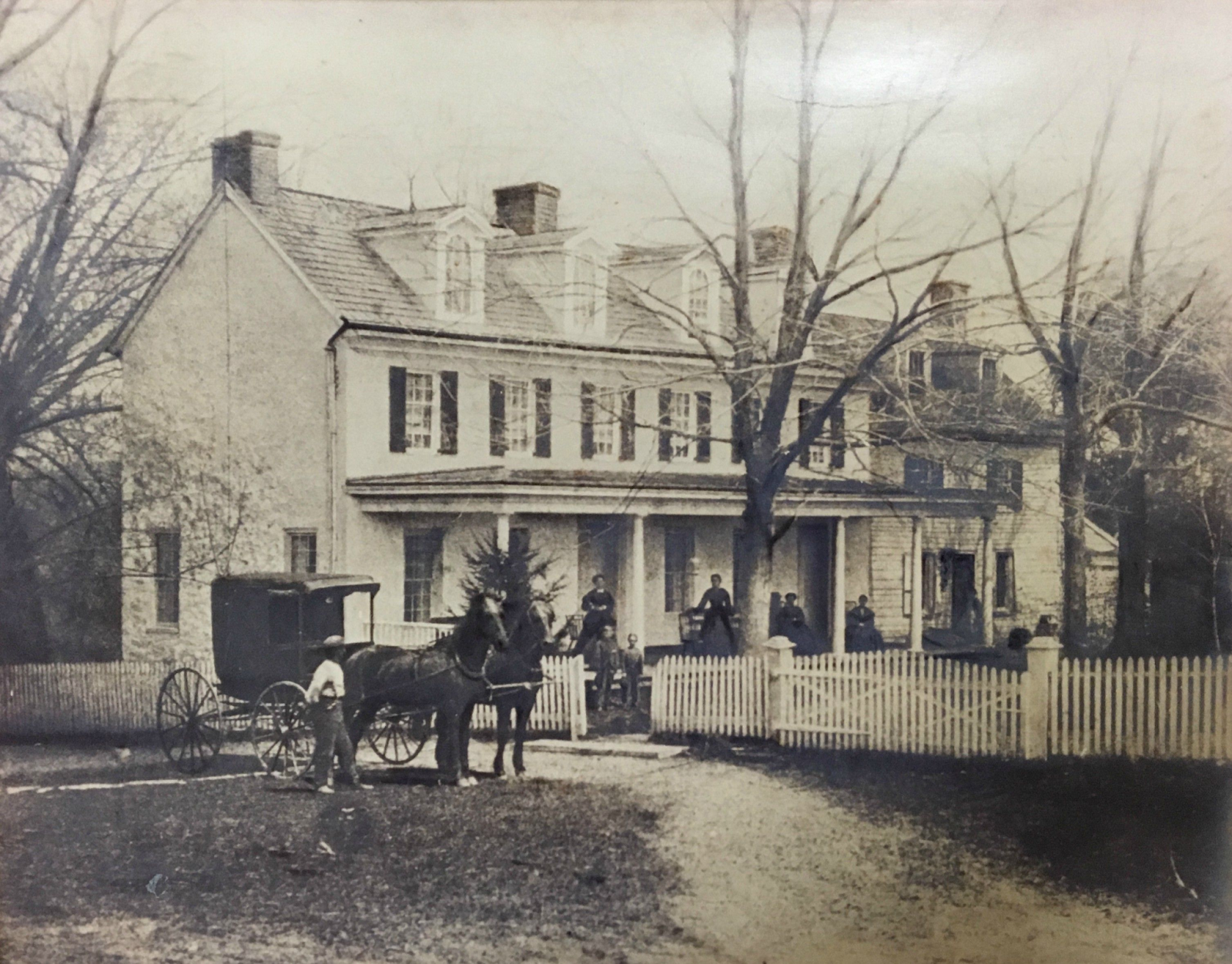
Enter the idea of the country club. An upscale, exclusive club for the wealthy with plenty of land for multiple sporting activities that their private “cottages” just couldn’t accommodate.
In the 1880s, The Country Club was opened by a group of wealthy men in Boston, and the concept took off like wildfire. By the late 1880’s the popularity of both golf and country clubs was booming in America.
Droves of people wanted to join country clubs which skyrocketed the allure of exclusivity.
With the Cliff notes version of how Americans fell in love with the idea of country clubs under your belt, let’s address the latest country club and golf course statistics and trends.
What the Latest Country Club Statistics & Trends Mean for Your Club
Traditionally, a country club’s image of exclusivity and networking looked like men doing business while lunching at the club or playing a round of golf. Today, things have changed significantly.
Professional women and young urban creatives are also looking for a place to fit in, network, and relax.
Keeping your eyes peeled and your ear to the ground concerning the latest country club and golf course stats and trends is a stellar move when it comes to gathering fresh ideas to rebrand your club to fit the needs and wants of your members.
Today, the country club and golf course market in the US is worth $25.8 billion.
An impressive number, right? On top of that, projected golf industry statistics for 2021 show a growth expectation of 1.5% for the year.
Growth in golf interest could mean a boost in your member numbers if you’d like to increase club membership. Being ahead of the game in the latest country club trends will solidify you as THE country club when potential new members are on the search.
Your revenue is a critical element to your country club.
Member dues make up about 62% of total operating revenue — your membership dues are crucial to the operation of your club.
Payroll remains the most significant expense at 52% of total operating expenses. (A club’s brand is its staff and its staff is its brand, so there’s been a rise in compensation) A well-trained staff who serve your members with excellence create happy members — happy members are loyal members.
*A special note here — a trend in the hospitality industry is to reduce labor expenses down to 45% through reorganization. Before you break into a sweat and start wringing your hands, rest assured — you don’t have to sacrifice quality to achieve this. Ottimate can help reduce labor costs spent on manual processes by integrating AP automation.*
Country Club Trends To Watch for in 2022
Gen Z & Millennials have different values and priorities than older generations, and country clubs have to evolve to keep up. Below are 2 main areas that you need to pay attention to.
1. Increased fitness and wellness amenities
The interest in fitness and wellness amenities at country clubs is widespread and continually growing — 65% of country clubs have already invested or are in the process of investing in fitness and wellness amenities.
In a 2018 study of 426 private clubs by the Club Spa and Fitness Association, 57.5% reported already having a fitness center that contained, on average, 2,925 square feet of usable space.
If your club is considering investing in wellness amenities, the following numbers can help you decide how best to plan staffing your fitness center.
Staffing is a determining factor between a fitness facility that is promoted as a club amenity and a facility that is promoted as a membership offering (i.e., raising member engagement and club value).
Your club’s size determines your fitness facility staffing.
In clubs with 501-1000 memberships, 71% of those club fitness facilities were staffed, while in smaller clubs with less than 500 members, only 36% of those facilities were staffed.
Staffing can include personal trainers, facility monitors, group exercise leaders, or the facility manager.
If you don’t already have a fitness facility, consider surveying your members to gauge interest. In addition to member surveys, keep a record of how many fitness facility inquiries are made at the time of new member inquiries.
2. Increased technology integration
With the pandemic shutdown, many clubs needed to quickly pivot to continue to serve their members.
Enter technology.
Many older, traditional country clubs focus (and pride themselves) on personal connection and high-touch service. While high-touch, personal connection will always be an essential element, the pandemic forced the transition to embrace contactless technology solutions.
Mobile apps that integrate seamlessly with their website enabled to-go food orders for members — they could still get their favorite food during the lockdown.

With competition like GrubHub & DoorDash, mobile ordering became a must during the lockdown, and clubs realized the value of using mobile apps to serve their members.
Today, companies offer mobile apps through which members can access:
- Food orders
- Club calendar
- Tee times
- Tennis court reservations
- Fitness schedule
- Member directory
And, clubs can send push notifications & reminders to their members through the apps.
Technology can help your club in various aspects.
- Technology offers new ways to market amenities. Member demographics are shifting, and different amenities are desired. Websites, email lists, and apps are now necessary to keep your club members informed and involved with club society.
- Labor shortages also mean that country clubs might have to do more with a smaller staff count – technology and back-office automation help keep the high-touch aspect of personal connections but move the paper trail online.
- All country club board members are closely involved in financial operations – technology that enables them to have an overview, signoff, and audit financials remotely and conveniently is a game-changer.
Golf Course Trends
Interest in golf is on the rise – according to NGF, 501.8 million rounds of golf were played in 2020 (up 60 million rounds or 14% from 2019) & 3 million people played golf for the very first time in 2020. That’s a record number of beginners.
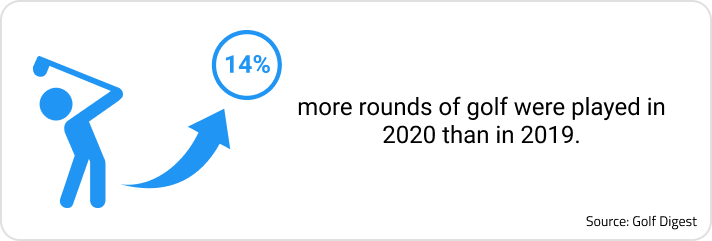
Golf’s back, baby!
The US golf industry statistics show country clubs & golf courses reported significant income. According to an IBISWorld report from 2020, the market was worth $25,362.5 million in 2020, and it’s expected to keep growing.
An interesting new trend is that the golf cart industry has turned to single-rider options.
Social distancing rules dictated one rider per cart or no carts allowed on golf courses at all. So, the demand rose for transport that would provide both comfort and the mandated distance.
The 2 most popular transport solutions were the GolfBoard and Finn Scooters.
According to Golf Pass, as of May 2020, roughly 3,000 GolfBoards were sold to 300 courses around America, and Finn Scooters, launched in 2019, had leased close to 300 vehicles to golf courses by the end of their first year in business.
There’s also been a boost in nighttime golf games, especially on the weekends.
At golf courses that feature night golf, the rise in play was even larger than the increase in daytime rounds.
The Lights at Indio, a golf course in Coachella Valley, CA, reported three times the amount of nighttime weekend golf games!
The popularity of night golf has also triggered the opening of new courses in other states. For example, the Timpanogos Pasture Par 3 Course in Provo is Utah’s 1st night-lit golf course.
Sustainability is key
Sustainability is more than a trending buzzword. The following golf course statistics show the top environmental practices today:
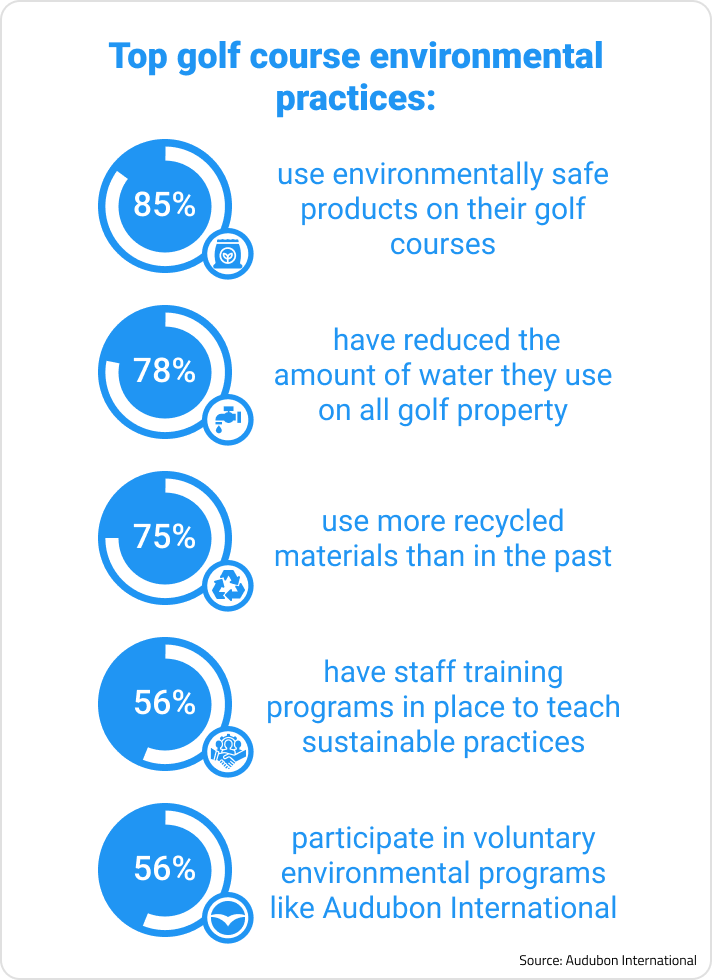
How Golfers Use Their Phones
If you want to utilize technology on your golf course, you need to know how tech-savvy or tech-dependent today’s golfers are. A good gauge is how they utilize their phones during the game and their view on smartphone use on the golf course.
Golf Digest’s survey of their 233,000 Twitter followers gives us a good gauge of golfer phone use — here’s the highlight reel of the survey:
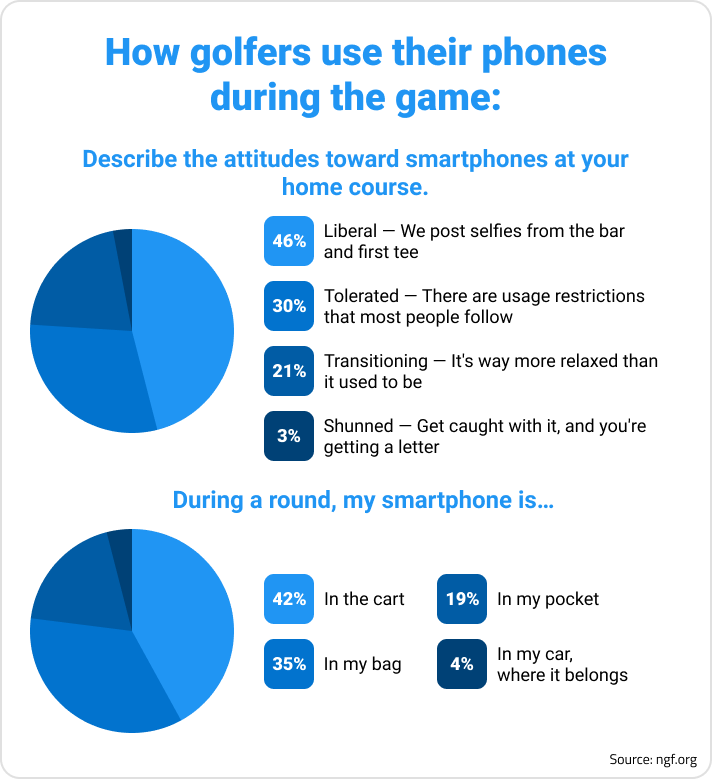
If you’re considering a mobile app to help your golfers with their game, it’s important to know how YOUR club’s golfers are using their phones and their attitude about cell phone use on the course.
Consider doing your own survey to analyze phone use among your members before you make any technology shifts.
AP Automation Is the Future of Club Management
According to IOFM, (Institute of Finance Management), 71% of AP departments are automating in 2021. So, if you’ve been holding out & holding tight to your paper invoices and ledgers, now’s the time to be part of that 71% and jump on board with AP automation.
Ottimate increases the efficiency and accuracy of your invoice management process by streamlining your workflow. With a centralized AP process, invoice authorization is simplified.
Reports are easily accessed and readily available when it’s time for the club board to review the budget. Utilizing virtual cards, like the Ottimate Card, enhances expense management while allowing you to earn cash back.
AP automation enables your department heads to be member-centric while staying on top of their AP workflow.
The Club at Ravenna reduced time spent on AP by 80% with Ottimate.
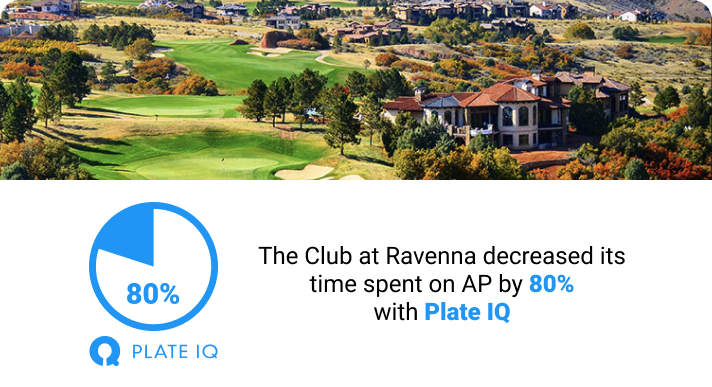
Country Club Statistics Tell a Story
Country club and golf industry statistics and trends tell a story about how things are changing. Members’ interests and priorities are shifting, and it’s important that your club pivot to stay on top.
Integrating technology can bring your club into the digital age, which will benefit your members, your staff, and your bottom line in 1 swoop.
Streamlining your AP department through automation saves you money, labor, and increases efficiency. Request a demo of Ottimate today so we can help your country club seamlessly integrate technology into your AP system!